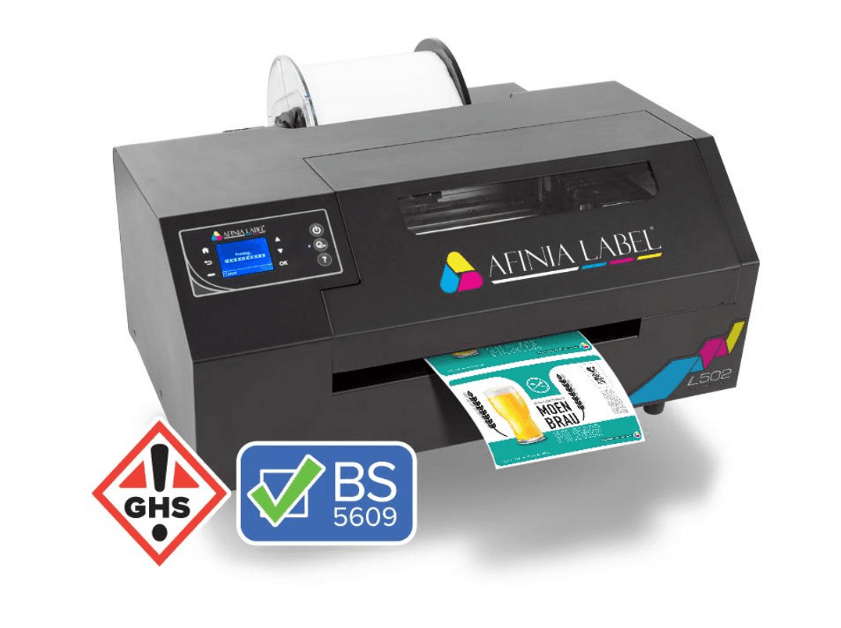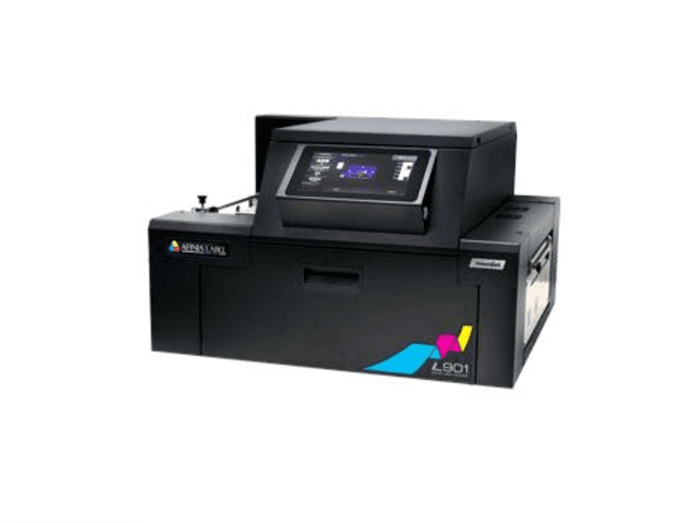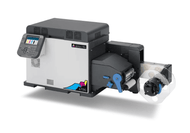How to Get Nutrition Facts for Your Favorite Food Product?
11th Jul 2025
Have you ever picked up a packaged food item off the shelf and wondered about its nutritional content? When standing in front of the grocery store aisle, your favorite food product often catches your eye. It's tempting, right?
But what’s really inside that shiny packaging? The truth is, what you eat can impact your energy, mood, and overall health—but only if you understand what’s in your food.
Nutrition facts aren’t just numbers on a label; they’re the key to making smarter food choices and avoiding trans fat.
Think about it: whether you're managing your weight, controlling blood sugar, or just aiming to feel better day-to-day, understanding these facts is your first step to taking charge of your health. But the challenge is—how do you navigate those labels?
Here’s the good news: You don’t need a degree in nutrition to get it right. In this blog, we’ll uncover how you can easily decode nutrition facts and why it’s more important than ever to know exactly what you’re putting into your body. Ready to start? Let's dive in!
What Are Nutrition Facts Labels?
Nutrition Facts labeling is your go-to guide for understanding exactly what’s in your food. From calories and fats to proteins and vitamins, these labels break it all down, giving you the full picture.
Mandated by the FDA, they’re here to help you make smarter, healthier food choices for a healthy diet. Think of them as your roadmap to better eating, making it easy to find foods that support your health goals
Importance of Nutrition Facts for Consumer Awareness
Nutrition Facts labels are more than just a formality—they’re:
-
A key to making informed decisions about what you eat.
-
Next time you manage a health condition, count calories, or just aim for a balanced diet, these labels have your back.
-
They reveal everything from fat content to fiber, protein, and vitamins, helping you stay on track with your health.
In short, nutrition facts are the ultimate tool for choosing smarter, healthier foods—one label at a time.
How to Obtain Nutrition Facts?
Getting accurate Nutrition Facts for your product is essential in ensuring compliance and informing your customers. Here's a breakdown of the process and the options available to you:
1. Food Lab
Food Labs are the gold standard for precise nutritional analysis. These specialized centers use advanced food science technology to calculate every nutrient based on the ingredients in your product.
This method is the most accurate if your product is complex, like fried or processed foods. However, it’s also the most expensive, often costing $800 or more for a single analysis.
Plus, any changes to your recipe—like adding or removing ingredients—require a re-analysis, leading to additional costs. But for high-precision results, Food Labs are unmatched.
2. Independent Consultant
An independent consultant can handle your nutrition analysis if you’re looking for a more affordable option.
They’ll take care of the heavy lifting, delivering your Nutrition Facts panel without the high price tag of a Food Lab. However, costs can still be significant, and just like Food Labs, any recipe modifications will incur extra fees.
This route is ideal if you're new to food manufacturing and need guidance, but still want to keep expenses in check.
3. Web-based Nutrition Analysis Software
Web-based nutrition analysis software is a popular choice for fast, cost-effective options. These tools allow you to generate an FDA-compliant Nutrition Facts label with just a few clicks, including detailed nutrition information.
Simply input your product’s recipe and serving size; the software does the rest. While the software is user-friendly, it does require some basic knowledge to use effectively.
It's an excellent solution for those who streamline the process and avoid hefty lab or consultant fees.
|
Steps to Use a Web-based Software |
Details |
|
Step 1 |
Create an account and login |
|
Step 2 |
Enter the product recipe and the serving size |
|
Step 3 |
The software generates an FDA-compliant nutrition facts label, allergen statements, and ingredient statements |
|
Step 4 |
Modify as needed |
|
Step 5 |
Download the completed label and print |
Detailed Steps in Creating Nutrition Facts Labels
Creating a Nutrition Facts label involves 4 essential steps to ensure consumer compliance and accuracy. Here’s a quick guide to help you through the process:
Step 1: Determining Your Serving Size
The serving size is the amount typically consumed in one sitting, also referred to as a single serving. The number of servings should be indicated on the label. It’s expressed in familiar household measures, like "15 chips (30g)." All nutritional info on the label corresponds to this amount, so double servings mean double the listed nutrients.
Step 2: Conducting a Nutritional Analysis
This step involves gathering data about your product’s nutritional content, such as calories, fats, proteins, and vitamins. You can do this through a food lab or a web-based tool. This analysis forms the foundation for your Nutrition Facts label.
Step 3: Designing the Nutrition Facts Panel
With your nutritional data, design the label following the FDA's standardized format. This includes sections for serving size, calories, fat, carbs, protein, key vitamins/minerals, and their daily value percentages.
Step 4: Printing the Nutrition Facts Label
Finally, print your label on durable, easy-to-read material that can withstand handling and transport. Position it for easy visibility and compliance with FDA guidelines. Don't forget to pick a durable printer like Afinia's printers that offers top-notch quality printing.
Top Afinia Label Printers for Nutrition Facts Printing
Several Afinia label printers stand out for creating precise nutrition facts panels that adhere to FDA standards. Here, we will discuss three such printers:
1. Afinia L502

The Afinia L502 is a versatile label printer for small to mid-sized businesses. It offers dual ink capabilities, allowing users to switch between dye-based and pigment-based inks, catering to various labeling needs.
Key Features:
-
Dual Ink Technology: Switch between dye-based inks for vibrant colors and pigment-based inks for durability.
-
High Print Resolution: Capable of printing at resolutions up to 4800 dpi, ensuring sharp and detailed labels.
-
BS5609 Certification: Meets international standards for chemical labeling, making it suitable for GHS-compliant labels.
-
Industrial Design: Features an all-steel construction with improved sensors for compatibility with specialty media.
Pros:
-
Dual ink options provide flexibility for different labeling requirements.
-
4800 dpi resolution ensures professional-grade labels.
-
BS5609 certification supports regulatory compliance.
-
All-steel construction enhances longevity and reliability.
Cons:
-
It may not be suitable for extremely high-volume printing needs.
-
Higher upfront investment compared to basic label printers.
-
Regular maintenance is needed to ensure optimal performance.
-
Best suited for specific media types; may require testing for other materials.
2. Afinia L901

The Afinia L901 is designed for high-volume label printing, offering fast speeds and high-quality outputs. It's ideal for businesses that require efficient and consistent label production.
Key Features:
-
Memjet Technology: Utilizes Memjet's inkjet technology for high-speed printing.
-
High Print Resolution: Delivers print resolutions up to 1600 dpi for detailed labels.
-
WaterShield™ Inks: Provides water-resistant labels, suitable for products exposed to moisture.
-
Inline Integration: Can be integrated with label finishers, applicators, and dispensers for streamlined workflows.
Pros:
-
High-speed capabilities enhance productivity.
-
1600 dpi ensures crisp and clear labels.
-
Ideal for products exposed to moisture.
-
Seamlessly integrates with other labeling equipment.
Cons:
-
Premium features come with a higher price tag.
-
A larger footprint may require more installation space.
-
Regular servicing to maintain optimal performance.
-
Best suited for specific label materials.
3. Afinia LT5C
The Afinia LT5C is a toner-based label printer with unique white printing capability and standard CMYK colors. This feature is particularly beneficial for printing on transparent or dark-colored label materials.
Key Features:
-
Five-Color Printing: Includes CMYK plus white toner for versatile label designs.
-
High Print Resolution: Prints at 1200 x 600 dpi for detailed images and text.
-
LED Technology: Utilizes LED-based toner for energy efficiency and reduced maintenance.
-
Media Flexibility: Printable on various media types, including clear, foil, and dark materials.
Pros:
-
Enables printing on transparent and dark materials.
-
LED technology reduces energy consumption.
-
1200 x 600 dpi resolution ensures sharp labels.
-
Compatible with various label materials.
Cons:
-
Premium features come with a higher cost.
-
It may require more time to set up than basic printers.
-
Regular maintenance is needed to ensure longevity.
-
Primarily supports CMYK plus white; additional colors may require unique setups.
Print Accurate Nutrition Labels at Scale with OmegaBrand Printers
When printing Nutrition Facts labels, OmegaBrand covers you with the best Afinia printers. These printers offer high-quality, precise prints to ensure your labels are sharp, clear, and compliant with FDA regulations.
From the versatile Afinia L502 to the high-volume Afinia L901, OmegaBrand provides solutions for every need. Whether you’re printing small batches or large production runs, these printers deliver exceptional results on materials like gloss, matte, and synthetic labels.
Choose OmegaBrand for your Afinia printers and get durable, water-resistant labels that meet the most challenging conditions. Fast, efficient, and cost-effective, these printers make it easy to stay compliant while keeping your production line moving smoothly. Contact us now!
Conclusion
Nutrition Facts labels aren’t just about meeting regulations—they’re a chance for food manufacturers to showcase their commitment to transparency and quality. Every step, from determining serving sizes to creating accurate, eye-catching labels, is pivotal in building customer trust.
When you get it right, your labels do more than inform—they elevate your brand, boost customer confidence, and drive loyalty. OmegaBrand printers deliver precision and durability, so your labels will not only comply with FDA standards but also stand out on the shelf, grabbing attention and making a lasting impact.
Clear, honest nutritional information isn’t just a label; it’s a powerful tool that builds a healthier, more informed community while giving your brand the credibility it truly deserves.
Frequently Asked Questions
How can I ensure accuracy in my nutrition facts?
To ensure accuracy in your nutrition facts, use reliable sources such as the USDA database or product labels from your local grocery store. Additionally, analyze serving sizes carefully and utilize precise measuring tools for ingredients. Regularly updating your data with the latest nutritional information is essential for maintaining accuracy.
Is it mandatory to include specific nutrients on the label?
Yes, it's mandatory for Americans to include specific nutrients on food labels. The FDA requires information on calories, total fat, cholesterol, sodium, carbohydrates, dietary fiber, sugars, protein, and certain vitamins and minerals. These requirements ensure consumers can compare labels and make informed dietary choices, especially when considering similar products.
What is the cost involved in generating nutrition facts labels?
The cost of generating nutrition facts labels varies widely depending on software, design services, and printing options. Typically, businesses can expect expenses related to compliance, ingredient analysis, and label production. With the availability of a free nutrition label generator, understanding these factors helps in budgeting effectively for accurate nutritional labeling.
What are the top printers for nutrition fact printing?
Top printers for nutrition fact label printing include:
-
Afinia L502: Ideal for small to mid-sized businesses with moderate print volumes.
-
Afinia L901: Excellent for larger print volume with high-speed and quality outputs.
-
Afinia LT5c: Combines speed, quality, and efficiency, making it apt for adding color detailing on labels.

